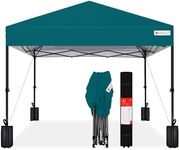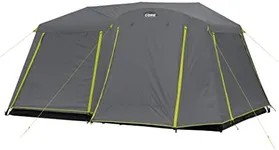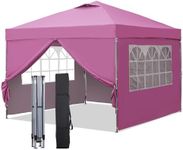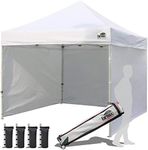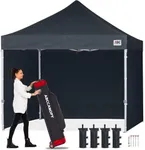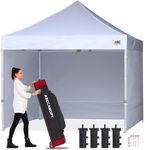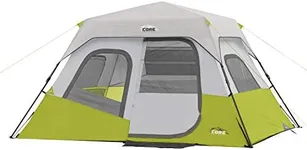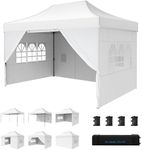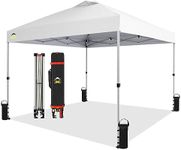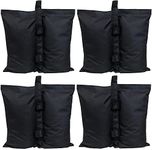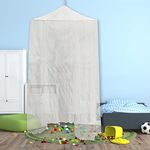Buying Guide for the Best Canopies Tents
Choosing the right canopy tent involves understanding your specific needs and the various features that different models offer. Canopy tents are versatile and can be used for a variety of purposes such as camping, outdoor events, market stalls, and more. To make an informed decision, consider the following key specifications and how they align with your intended use. This will ensure you get a canopy tent that meets your requirements and provides the best value for your needs.SizeThe size of a canopy tent is crucial as it determines how much space you will have underneath. Canopy tents come in various sizes, typically measured in feet. Smaller tents (e.g., 5x5 or 8x8 feet) are suitable for intimate gatherings or personal use, while medium-sized tents (e.g., 10x10 or 12x12 feet) are great for small events or market stalls. Larger tents (e.g., 20x20 feet or more) are ideal for big events or large groups. Consider the number of people and the amount of equipment or furniture you need to accommodate when choosing the size.
MaterialThe material of the canopy tent affects its durability, weather resistance, and weight. Common materials include polyester, polyethylene, and canvas. Polyester is lightweight and water-resistant, making it suitable for casual use. Polyethylene is more durable and waterproof, ideal for frequent outdoor use. Canvas is heavy-duty and offers excellent protection from the elements, perfect for long-term setups. Choose a material based on how often you plan to use the tent and the typical weather conditions you expect to encounter.
FrameThe frame of the canopy tent provides structural support and stability. Frames are usually made from steel or aluminum. Steel frames are strong and durable but can be heavy, making them suitable for stationary setups. Aluminum frames are lightweight and resistant to rust, making them easier to transport and ideal for portable use. Consider the balance between strength and portability based on how you plan to use the tent.
Weather ResistanceWeather resistance is important to ensure your canopy tent can withstand various weather conditions. Look for features such as UV protection, waterproofing, and wind resistance. UV protection helps prevent sun damage, waterproofing keeps you dry during rain, and wind resistance ensures the tent remains stable in windy conditions. Assess the typical weather in your area and choose a tent with the appropriate level of protection.
Ease of SetupThe ease of setup can greatly affect your experience with a canopy tent. Some tents come with a pop-up design that allows for quick and easy assembly, while others may require more time and effort to set up. If you plan to use the tent frequently or need to set it up alone, a pop-up design may be more convenient. For larger or more permanent setups, a more complex assembly might be acceptable. Consider how often you will be setting up and taking down the tent when evaluating this feature.
PortabilityPortability is a key factor if you need to transport your canopy tent frequently. Features that enhance portability include a lightweight frame, a compact design, and a carrying case with wheels. If you plan to move the tent often, look for these features to make transportation easier. For stationary use, portability may be less of a concern.
Additional FeaturesAdditional features can enhance the functionality and comfort of your canopy tent. These may include sidewalls for added protection and privacy, ventilation windows for airflow, and anchor systems for added stability. Consider what extra features might be beneficial for your specific use case. For example, sidewalls can be useful for market stalls or events where privacy and protection from the elements are important.
